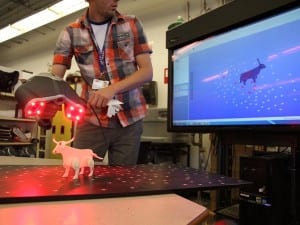
You can very well imagine how difficult it can be to carry out the task of 3D scanning when you do not possess the perfect technology. Just grab hold of the newest equipment available and the 3D scanning service will appear quite straightforward and simple. It still remains a challenge to scan objects that are smaller in size. For making this possible what you need are advanced equipments. This either needs the creation of CAD model as well as a very high level of performance for inspecting smaller and minute parts.
Very recently this was made possible by EMS. An orthopedic company had approached where they were required to bring changes in the components of small size. There was no CAD model for these components and therefore it was quite impossible for them to recreate manually after measuring the parts because they are very tiny. A quick solution was offered by EMS. They made use of Steinbichler L3D, which is a 3D scanner of 5 megapixels. There are six different types of lenses which range between 800 millimeter field of view and 45 millimeter field of view. You can thus select the appropriate lens for your task. There are same numbers of points of target till five million in every lens. A tiny field of view indicates that a small space included more number of points. This has proved to be a boon for capturing very tiny objects. The device captured data at an unimaginable speed of 0.018 millimeter space.
A lot more is performed by the 3D scanning service than merely capturing information at the minute level. The device offers accuracy at 0.02 millimeter. The parts involved were of such little size that it was difficult to engineer those or manually inspect them. The high resolution images could thus be created with the scanner which made it possible to make models of very small dimensions.
There was another hindrance for EMS and that was to find out the way in which the object should be held in place while scanning. The object being really small, normal fixtures and armatures could not be used. Some new method had to be devised. For holding the object to be scanned in place they made use of magnets so that they could take the images from almost all angles. The method was effective as it prevented any obstruction that would block view. The result had pleased the orthopedic company.
